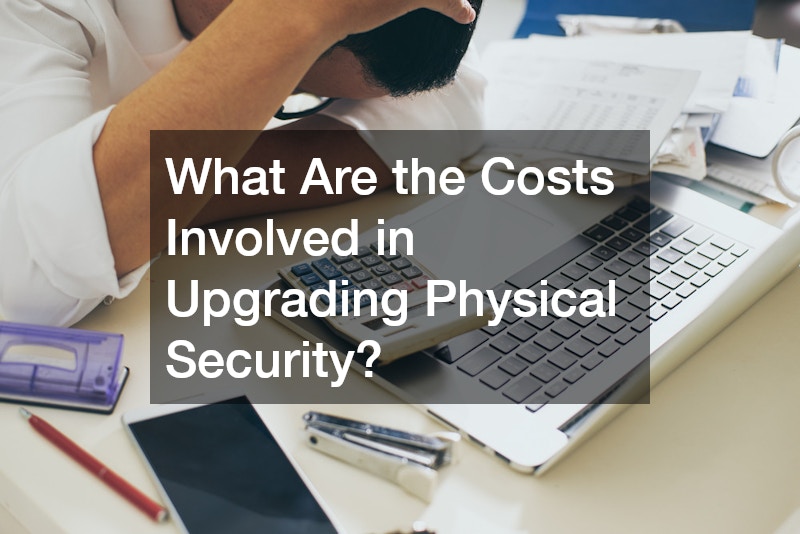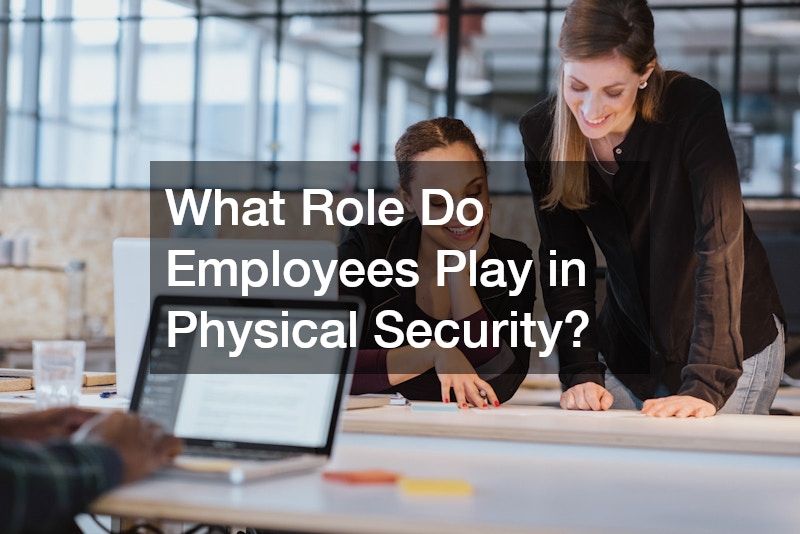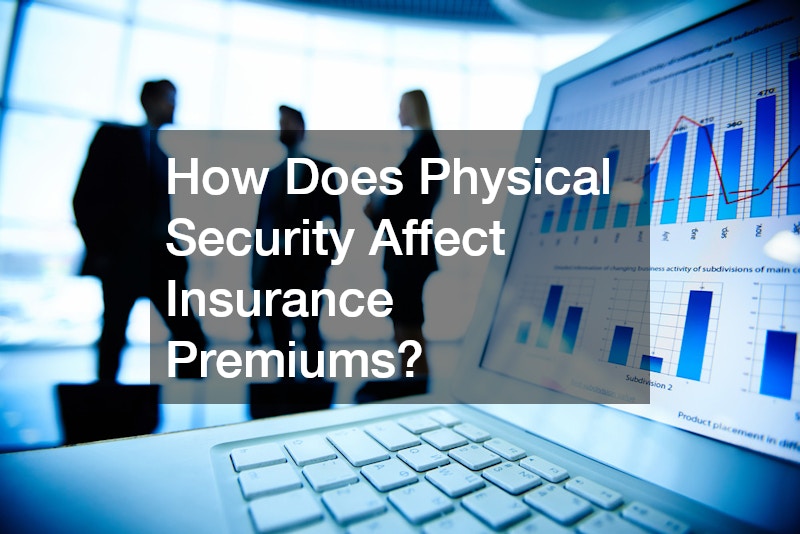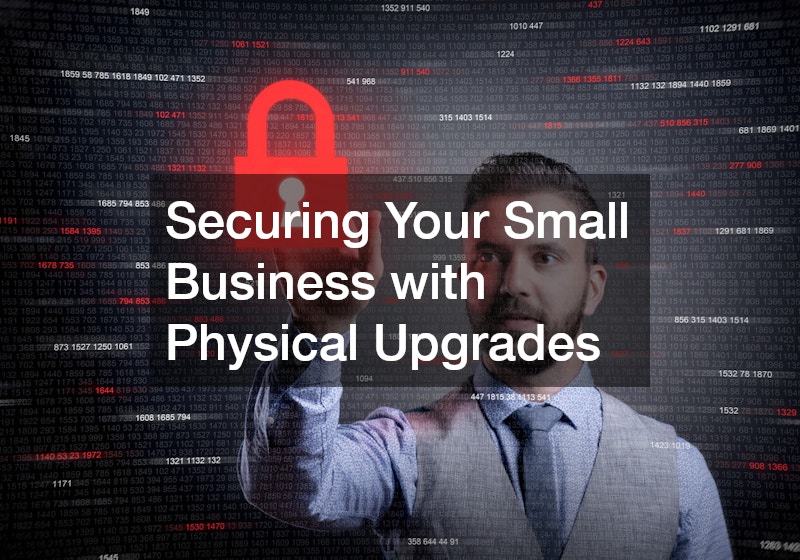Small businesses face a wide range of security challenges that can threaten employees, assets, and sensitive data. From theft and vandalism to more sophisticated criminal activity, the risks are real and ever-evolving. Physical security upgrades are a vital layer of protection, offering safeguards that go beyond digital measures. By implementing proactive security enhancements, small business owners can deter criminal activity, protect employees and customers, and ensure operational continuity. These upgrades not only improve safety but can also influence insurance premiums and reduce overall business risk. Incorporating thoughtful physical security measures—including barriers, access control, and monitoring systems—lays the foundation for a secure and resilient business environment.
- What Are the Basic Physical Security Measures for Small Businesses?
- How to Conduct a Security Assessment?
- What Are the Costs Involved in Upgrading Physical Security?
- How Can Technology Integrate with Physical Security?
- What Role Do Employees Play in Physical Security?
- How to Choose the Right Security Equipment and Vendors?
- How to Maintain and Upgrade Security Systems Effectively?
- What Are Common Mistakes to Avoid in Physical Security?
- How Does Physical Security Affect Insurance Premiums?
- What Are Some Case Studies of Successful Physical Security Upgrades?
- Final Thoughts
What Are the Basic Physical Security Measures for Small Businesses?

Importance of Physical Barriers
Physical barriers are the cornerstone of effective business security. Reinforced doors, high-quality fencing, and strategically placed barriers create visible and tangible deterrents. Security gate systems, for instance, provide controlled access to parking lots or restricted areas, protecting vehicles, inventory, and personnel. These barriers help manage traffic flow and prevent unauthorized entry, particularly in locations that are vulnerable to break-ins. In addition, integrating barriers with other security measures such as lighting or surveillance cameras enhances overall protection.
Effective Use of Locks and Keys
Locks remain a fundamental component of small business security. Modern solutions go beyond traditional keyed locks, including electronic keypads, card access systems, and biometric controls. When combined with a business security system, these access methods provide robust entry management and detailed logs of who enters and exits the premises. Ensuring that keys or access codes are updated regularly and revoked promptly for former employees is essential. Redundant locking systems—mechanical plus electronic—offer a reliable defense against unauthorized access.
Installing Security Cameras
Security cameras act as both a deterrent and a tool for investigation. Properly positioned cameras monitor entrances, loading areas, and critical internal spaces, ensuring that incidents are recorded and traceable. Cloud-based surveillance systems allow business owners to monitor activity remotely, while integration with alarm monitoring services provides rapid notification of suspicious events. Combining camera surveillance with security gate systems strengthens perimeter security, offering comprehensive visual coverage for any small business.
Lighting and Visibility Enhancements
Adequate lighting is a simple but effective security enhancement. Well-lit exteriors, entrances, and walkways discourage criminal activity while providing safety for employees and customers. Motion-activated lighting can startle intruders, drawing attention to unauthorized activity. Inside the business, ensuring clear sightlines with strategically placed site furnishings, such as benches or planters, helps maintain visibility without obstructing movement. Lighting combined with thoughtful interior and exterior design reduces risk and promotes a safer environment.
Alarm Systems and Monitoring
Alarm systems provide immediate alerts for intrusion, fire, or other emergencies. A fully integrated business security system connects alarms, cameras, and access control measures to a central monitoring hub. Professional security companies often provide risk assessment services to determine the optimal placement of sensors and devices. Modern alarm systems may include glass-break detectors, environmental sensors, and mobile app alerts, ensuring a rapid response to potential threats.
How to Conduct a Security Assessment?
Identifying Vulnerable Areas
A comprehensive security assessment begins by identifying areas that are most susceptible to criminal activity. Vulnerable zones often include back entrances, loading docks, parking lots, and storage areas. Risk assessment services can provide a structured approach to determining weaknesses and prioritizing upgrades. Mapping these areas and analyzing foot traffic patterns ensures that security investments are applied where they are most needed.
Understanding Security Threats
Understanding the range of threats facing a small business is crucial for designing effective security measures. Retail businesses may contend with shoplifting, while offices face data theft or unauthorized entry. Warehouses may prioritize perimeter security to protect high-value inventory. Security film installers can reinforce windows to resist break-ins, offering an additional layer of protection against glass-related intrusions. By assessing specific threats, business owners can implement targeted strategies that address the most likely risks.
Prioritizing Security Needs
Once threats are identified, prioritizing security needs allows businesses to allocate resources efficiently. High-value areas, main entrances, and sensitive storage locations typically require immediate attention. Secondary locations may be addressed gradually to balance cost with safety. Prioritization also helps determine which upgrades—such as window tinting service, alarm systems, or security gate systems—will deliver the greatest benefit relative to investment.
Utilizing Professional Security Auditors
Professional security auditors bring expertise in evaluating existing systems and recommending enhancements. They may assess both physical infrastructure, including metal building structures or commercial high rise iron installation projects, and technological solutions. Their evaluation often includes reviewing current alarm and access systems, analyzing building vulnerabilities, and creating a step-by-step plan for improvements. Partnering with a certified security company ensures that recommendations are practical, effective, and aligned with industry standards.
Regular Security Evaluations
Security is not a one-time effort. Periodic evaluations help businesses stay ahead of evolving threats. Routine inspections of cameras, alarms, locks, and lighting are critical for maintaining effectiveness. Security companies can provide scheduled assessments to identify equipment wear, lapses in protocol, or emerging vulnerabilities. Continuous review allows small business owners to adapt strategies proactively, ensuring ongoing protection and compliance.
What Are the Costs Involved in Upgrading Physical Security?

Budgeting for Security Enhancements
Upgrading physical security requires careful budgeting. Costs vary depending on the size of the business, the number of access points, and the level of protection desired. Essential measures may include installing security gate systems, hiring security film installers, or enhancing exterior lighting. Additional expenses may cover a business security system with remote monitoring capabilities. A detailed budget helps allocate funds effectively and avoid overspending while maintaining comprehensive protection.
Cost-Benefit Analysis
Investing in physical security should be weighed against the potential losses from theft, vandalism, or property damage. The upfront cost of upgrades, including window tinting service, site furnishings that improve visibility, or reinforced doors, is often offset by reductions in insurance claims and operational disruptions. Conducting a cost-benefit analysis ensures that resources are used where they deliver the greatest impact.
Exploring Funding and Grants
Small businesses can explore grants or funding opportunities to offset the cost of security upgrades. Some programs provide financial support for technology integration, physical barrier installation, or safety enhancements in commercial buildings. Engaging a security company may help identify available options, making critical upgrades more accessible for businesses with limited budgets.
Estimating Long-term Savings
Effective security upgrades contribute to long-term savings by reducing the likelihood of loss, insurance premiums, and emergency repairs. Preventive measures, such as alarm systems, security film installers, and commercial asphalt paving that improves exterior safety, minimize costly incidents over time. Investing in durable materials and professional installation ensures that protective measures remain effective for years.
Cost-effective Security Solutions
Businesses can adopt cost-effective solutions without compromising safety. Using window tinting service to reinforce glass, installing energy-efficient lighting, or adding site furnishings that enhance visibility are practical steps that increase security. Combining multiple protective layers, rather than relying on a single system, delivers superior results at a manageable cost.
How Can Technology Integrate with Physical Security?
Smart Locks and Access Control
Smart locks provide flexibility and enhanced security for small businesses. Access can be granted remotely or restricted to specific employees, with detailed logs for auditing. Integrating these locks with a business security system ensures centralized management and real-time alerts in case of unauthorized attempts. Smart access systems also reduce the need for physical keys, lowering the risk of lost or stolen credentials.
Cloud-based Surveillance Systems
Cloud-based surveillance systems offer remote monitoring and secure storage of video footage. Cameras can be accessed through mobile devices, allowing business owners to check activity while away from the premises. Integration with other security measures, such as security gate systems and alarm notifications, creates a unified security network that is responsive and efficient.
Integration with Alarm Monitoring Services
Combining physical security upgrades with professional alarm monitoring services ensures rapid response to incidents. Signals from motion sensors, door contacts, or glass-break detectors can be sent to a central monitoring station. This integration enhances protection by enabling swift intervention and supporting law enforcement or emergency services when necessary.
Mobile App Surveillance
Mobile apps allow owners and managers to monitor their business in real-time, receive alerts, and review recorded footage from anywhere. These applications can integrate with smart locks, security cameras, and alarm systems to provide comprehensive control over security operations. Mobile surveillance empowers small business owners to stay connected and proactive in maintaining safety.
IoT Devices for Security Management
The Internet of Things (IoT) enables interconnected devices to enhance security management. IoT solutions can link lighting, cameras, and alarms to create automated responses to detected threats. For example, motion-triggered lights or security gate systems can respond dynamically, alerting staff and monitoring services simultaneously. Leveraging IoT technologies increases efficiency while strengthening the overall security posture.
What Role Do Employees Play in Physical Security?

Staff Security Training Programs
Employees are the first line of defense in maintaining a secure business. Regular training programs educate staff on identifying suspicious activity, operating security systems, and responding to emergencies. Security-conscious employees can detect and prevent incidents before they escalate.
Implementing Access Control Policies
Access control policies restrict entry to authorized personnel only. Using smart locks, keycards, or biometric systems, businesses can ensure that employees only access areas relevant to their responsibilities. Policies should be communicated clearly and enforced consistently to maintain a secure environment.
Creating Emergency Procedures
Emergency procedures prepare employees to respond effectively to incidents such as break-ins, fire, or medical emergencies. Evacuation plans, lockdown procedures, and reporting protocols are essential for minimizing risks. Incorporating guidance from risk assessment services ensures that procedures align with best practices.
Encouraging a Security-minded Culture
Fostering a security-minded culture encourages vigilance and accountability among staff. Employees should feel empowered to report concerns, suggest improvements, and follow established security protocols. Regular discussions and reminders help maintain awareness and reinforce the importance of physical security.
Reporting Protocols for Security Breaches
Clear reporting protocols ensure timely communication of security breaches or suspicious activity. Employees should know how and when to report incidents, both internally and to professional security services if needed. Rapid reporting reduces response times and limits potential damage.
How to Choose the Right Security Equipment and Vendors?
Assessing Security Needs and Solutions
Understanding the unique security requirements of your business helps identify suitable equipment and services. Businesses may require solutions ranging from security film installers for reinforced windows to commercial high rise iron installation for structural protection. Assessing needs ensures that investments are aligned with actual risks.
Evaluating Vendor Credentials
Selecting a reliable vendor is crucial. Credentials, certifications, and experience in commercial and small business security projects demonstrate competence. A reputable security company provides professional guidance, quality equipment, and reliable installation services.
Comparing Product Features and Benefits
Different security solutions offer varying levels of protection. Comparing features of alarm systems, smart locks, cameras, or window tinting service ensures that the selected products meet operational and safety requirements. The right combination of technologies enhances security while supporting workflow efficiency.
Review of Customer Feedback and Testimonials
Customer feedback provides insights into the reliability and performance of security products and vendors. Testimonials often highlight real-world experiences and can help guide decision-making. Engaging with a vendor that has proven success with businesses similar to yours minimizes risks and ensures effective implementation.
Ensuring Warranty and Support Services
Long-term support and warranties protect investments in security systems. Reliable vendors provide ongoing maintenance, updates, and service options to keep equipment functional and effective. Ensuring coverage for key components, from alarm systems to commercial asphalt paving areas, helps maintain a consistent security standard.
How to Maintain and Upgrade Security Systems Effectively?
Regular System Inspections
Routine inspections identify potential issues before they escalate. Checking cameras, alarms, lighting, and access systems ensures continued effectiveness. Scheduled evaluations prevent failures and maintain operational security.
Upgrading Obsolete Equipment
Technology evolves rapidly, and outdated systems may create vulnerabilities. Upgrading obsolete equipment, including smart locks or surveillance cameras, keeps security measures aligned with modern threats.
Software Updates for Digital Components
Digital components, including cloud-based surveillance systems and mobile apps, require regular updates. Software patches enhance functionality, fix vulnerabilities, and maintain compatibility with integrated systems.
Regularly Changing Security Codes
Changing access codes, passwords, and PINs periodically limits the risk of unauthorized entry. Combined with smart locks and access logs, these measures provide an additional layer of security control.
Routine Staff Training and Drills
Ongoing training reinforces security protocols and prepares employees for emergencies. Drills simulate real scenarios, helping staff respond confidently and effectively. A trained workforce complements physical and technological security measures.
What Are Common Mistakes to Avoid in Physical Security?
Ignoring Minor Security Incidents
Small incidents can indicate larger vulnerabilities. Neglecting minor issues, such as unlocked doors or malfunctioning cameras, can lead to significant breaches. Prompt attention maintains overall security integrity.
Over-reliance on Single Security Systems
Relying solely on one security measure, such as alarms or cameras, creates gaps. Layering multiple systems, including security gate systems, window tinting service, and site furnishings that improve visibility, ensures comprehensive coverage.
Failing to Review Security Protocols
Regularly reviewing protocols ensures they remain effective. Businesses that do not adapt to new threats or changes in workflow risk lapses in protection.
Inadequate Staff Training
Employees unaware of security measures may inadvertently create vulnerabilities. Investing in ongoing staff training programs strengthens the human element of security.
Delaying Security System Upgrades
Delaying necessary upgrades, including commercial high rise iron installation, smart locks, or surveillance systems, exposes businesses to avoidable risks. Timely updates maintain effective protection against evolving threats.
How Does Physical Security Affect Insurance Premiums?

Insurance Requirements for Security Measures
Insurance providers often require specific security measures, such as alarms or reinforced access points, to qualify for coverage. Meeting these requirements ensures compliance and may influence eligibility.
Impact of Security Upgrades on Premium Rates
Physical security upgrades can lower insurance premiums. Installing a business security system, security film installers, or commercial asphalt paving improvements may demonstrate proactive risk management to insurers, leading to reduced rates.
Documentation and Compliance
Documenting security upgrades and maintaining records helps demonstrate compliance with insurance policies. Detailed logs of risk assessment services, system maintenance, and staff training support claims and inspections.
Negotiating with Insurance Providers
Proactive communication with insurers allows businesses to leverage security upgrades in negotiations. Demonstrating investment in protective measures, including security gate systems and professional installations, can improve policy terms.
Risk Assessment Discounts
Insurance providers may offer discounts based on documented risk reduction efforts. Using professional risk assessment services, upgrading infrastructure, and implementing comprehensive business security systems highlight a commitment to minimizing potential losses.
What Are Some Case Studies of Successful Physical Security Upgrades?
Case Study 1: Retail Business Security Overhaul
A retail business installed security film on all windows, upgraded lighting, and added a business security system. The combination reduced theft incidents and improved customer confidence. Site furnishings were arranged to maximize visibility, creating a secure and welcoming environment.
Case Study 2: Restaurant Security Technological Integration
A busy restaurant integrated smart locks, cloud-based cameras, and mobile app surveillance. Employees were trained to respond to incidents, and a security company conducted routine evaluations. Security gate systems controlled deliveries and restricted unauthorized access.
Case Study 3: Office Building Comprehensive Security Plan
A metal building housing several offices implemented commercial high rise iron installation, window tinting service, and alarm monitoring. Regular risk assessment services guided system upgrades, reducing security breaches and enhancing occupant safety.
Case Study 4: Secure Warehousing Solution
A warehouse leveraged commercial asphalt paving for secure access points, installed security cameras, and reinforced entrances with security gate systems. Security film installers strengthened vulnerable glass areas, while a professional security company managed monitoring and maintenance.
Case Study 5: Security Upgrades in Healthcare Facility
A healthcare clinic implemented a business security system, security gate systems, and IoT-enabled monitoring devices. Staff received comprehensive training, emergency protocols were established, and site furnishings were optimized for visibility. The result was a significantly safer environment for patients and employees.
Final Thoughts
Securing a small business through physical upgrades is a critical investment in safety, operational continuity, and peace of mind. By integrating barriers, cameras, lighting, alarms, and technological solutions, businesses create a multi-layered security strategy. Regular assessments, professional guidance from a security company, and staff engagement ensure that protective measures remain effective over time. Combining thoughtful planning with proactive upgrades transforms a business into a resilient and secure environment, prepared to meet evolving threats while safeguarding employees, customers, and assets.
